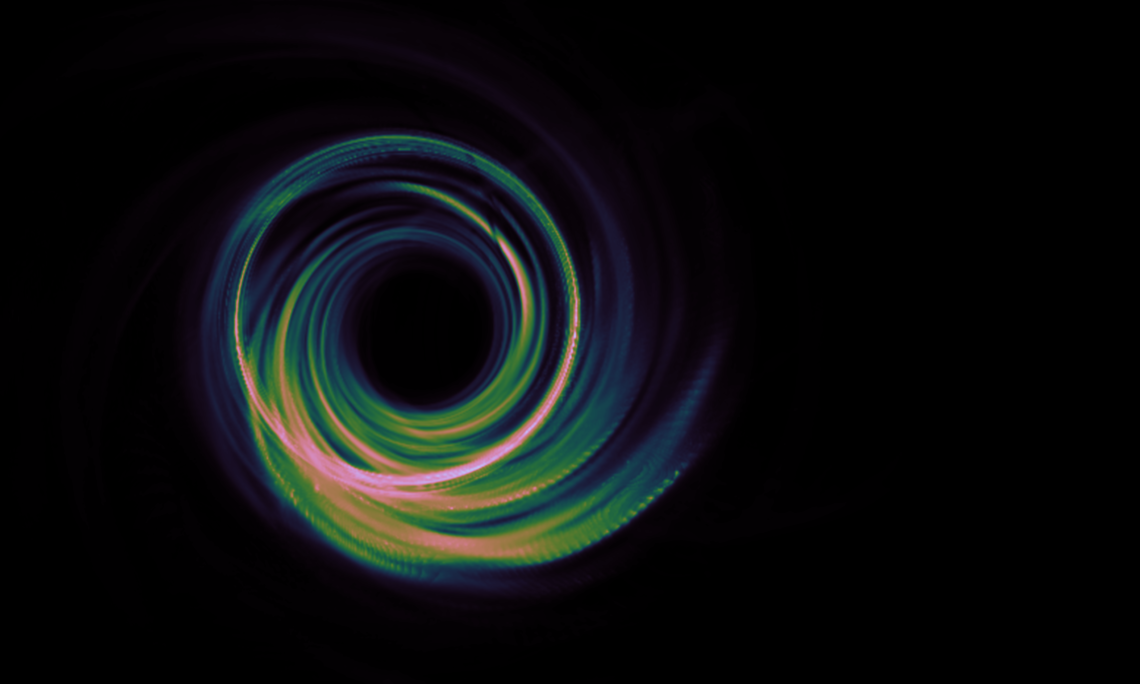Twisted jets? Warped disks? It’s all possible in black holes! Hi all! Today I will talk a bit about our recent paper on the different types of disks you can have around black holes. As perhaps you would know, in 2019, the Event Horizon Telescope collaboration (EHTC) released the first-ever photos of the inner regions of the galaxy M87 (see link here). The EHTC studied an extensive suite of theoretical models of accreting black holes and tried to see which models looked similar to the observed images. These models simulate how the gas accretes onto a spinning or non-spinning black hole and then calculates how photons of light produced by…
Read More >>The beauty of Einstein’s equations: black holes and beyond
There’s no doubt about it: Einstein’s general theory of relativity has changed the way we understand the cosmos, with its crowning glory being the discovery of black holes. Last year (2019), in May, I gave a short talk about the Event Horizon Telescope results on a webinar (link here) hosted by SPACE- India, an organization dedicated to bringing the wonders of space to school children in India. You can see the pdf of the talk here. I had a fun time interacting with them and (hopefully!) answered some of the questions from these curious young minds. I, of course, thank SPACE-India for the opportunity to reach so many kids. It…
Read More >>Decelerating jets
I recently published my first paper in my Ph.D., focussing mainly on how jets accelerate from black hole accretion disks using first-principles general relativistic magneto-hydrodynamic simulations. It is an important question, how jets become relativistic, achieving high enough kinetic energy to affect the intergalactic medium upon collision. It turns out that the shape of jet matters a lot and that means, the ambient medium (i.e., the environment surrounding the black hole and the accretion disk) really needs to be evolved properly. Interestingly, when you evolve your simulation enough to give instabilities some time to work their magic, the jet begins to slow down. This slowdown happens because instabilities pick up…
Read More >>How are magnetised jets launched?
With the Event Horizon Telescope results just a few days away, I thought it would be great to discuss how exactly a jet is launched from a black hole. The thought is counter-intuitive. Black holes are depicted as these giant “vacuum cleaners” in the centre of galaxies, eating up anything that has the misfortune of venturing close to it. Black holes are nicer than that, sometimes even throwing stuff out. This “stuff” is in the form of highly magnetised plasma and travels at near light speed (hence, a “jet”), shining over many orders of magnitude in distance. Above: VLBA 2 cm image of the parsec scale jet in the galaxy…
Read More >>Gravity, the reason why we are all so down to earth.
As one of fundamental forces, gravity works its magic on the physics of the largest scales, helping us understand how celestial objects form and move. Sir Isaac Newton in the 17th century formulated a mathematical equation depicting the effect two objects have on each other by virtue of their mass. Newton’s theory successfully predicted the presence of Neptune and continues to guide us in solving high school mechanics problems, apart from describing gravitational forces relating to small masses with velocities much lower than the speed of light. With Albert Einstein’s revolutionary theory of general relativity (or just GR) in 1915, an entirely new view of the heavens was brought to…
Read More >>Accelerating jets to relativistic speeds : energy, energy everywhere!
Hi there! I’m Koushik, a 2nd year PhD student in Sera’s group. I did my undergrad in India, a really beautiful country and also known to lay quite a lot of emphasis on highly theoretical research work (might even be a tad too much!). While I did my masters in Physics and my thesis on Einstein’s theory of general relativity (GR in short), my interests lie with applications to astrophysical phenomena, e.g. black holes. The most extreme sources of gravity are black holes lying deep in the heart of galaxies, millions to billions of times the mass of the Sun, such as Sagittarius A* in the Milky Way (our own…
Read More >>

